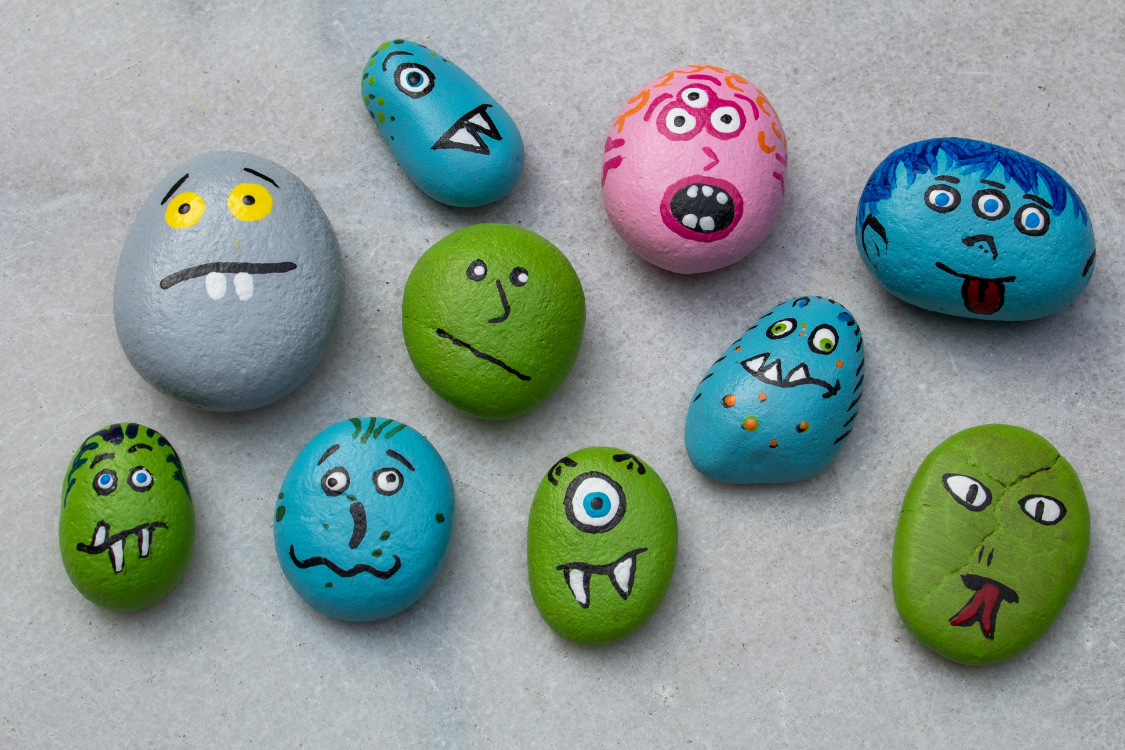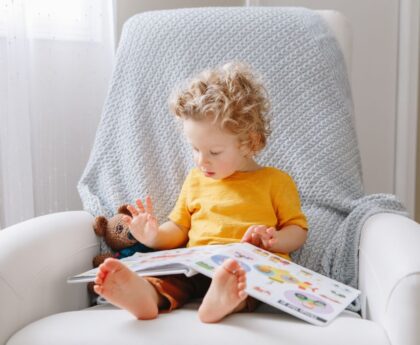What if you could help your child understand plot, sequence, and story structure using something as simple as painted rocks? Picture rocks, stones decorated with images that tell stories or represent story elements, offer a hands-on way to develop crucial reading comprehension skills. This tactile approach to storytelling helps young learners grasp narrative concepts that will serve them throughout their reading development.
Why Picture Rocks Work for Story Development
Picture rocks engage multiple senses while teaching abstract story concepts through concrete, manipulable objects. Children can physically arrange and rearrange story elements, making plot structure tangible and understandable. This kinesthetic approach particularly benefits children who learn better through hands-on activities than traditional paper-and-pencil tasks.
The three-dimensional nature of rocks helps children understand that stories have multiple layers and components that work together. When they hold different story element rocks—characters, settings, problems, solutions—they begin to grasp how these pieces combine to create complete narratives.
Picture rocks also provide scaffolding for children who struggle with abstract thinking. Instead of trying to hold story elements in their minds, they can manipulate physical objects that represent different parts of the narrative. This concrete support helps bridge the gap between visual thinking and comprehension skills.
Research shows that multi-sensory learning approaches improve retention and understanding, particularly for children with different learning styles. Picture rocks combine visual, tactile, and kinesthetic elements to reinforce story concepts through multiple pathways.
Build Sequencing Skills with Story Rocks
Create sets of picture rocks that tell simple stories in chronological order. Start with three-rock sequences showing beginning, middle, and end events. For example, paint rocks showing a seed, a sprouting plant, and a full flower to tell a growth story.
Have your child arrange the rocks in the correct sequence, then tell the story using the visual cues. This physical manipulation helps them understand temporal relationships and cause-and-effect connections that are fundamental to reading comprehension.
Gradually increase complexity by adding more rocks to sequences or creating branching storylines where different rock combinations create different story outcomes. This helps children understand that stories can follow various patterns while maintaining logical progression.
Use picture rocks to practice retelling familiar stories. After reading a book together, create rocks representing key story events, then have your child use the rocks to retell the story in their own words. This reinforces story structure understanding and builds narrative skills.
Understand Plot Structure Through Rock Manipulation
Create rock sets representing classic story elements: character rocks, setting rocks, problem rocks, and solution rocks. Use different colors or shapes to help children categorize these elements visually.
Practice building stories by having your child select one rock from each category, then create a narrative that incorporates all chosen elements. This helps them understand that stories follow predictable patterns while allowing for creative variation.
Introduce more sophisticated plot concepts by creating rocks that represent story complications, character changes, or multiple problems and solutions. This helps children understand that complex stories contain multiple layers and developments.
Use picture rocks to explore different story genres by creating themed sets. Adventure story rocks might include treasure maps, mountains, and brave characters, while mystery rocks could feature magnifying glasses, footprints, and suspicious characters.
Five Creative Picture Rock Activities
Activity 1: Story Building Bag
Create themed collections of picture rocks in drawstring bags—fairy tale rocks, animal adventure rocks, or everyday problem-solving rocks. Have your child draw rocks randomly from a bag and create stories incorporating the selected elements. This builds creativity while reinforcing story structure understanding, and helps children see that stories can emerge from any combination of elements.
Activity 2: Sequence Race
Paint rocks showing familiar story sequences from beloved books or nursery rhymes. Mix up the rocks and time your child as they arrange them in the correct order, then tell the story. Create multiple sequence sets for variety and increased challenge. This activity builds sequencing skills while making story structure practice feel like an exciting game.
Activity 3: Character Journey Rocks
Create rocks showing the same character experiencing different emotions or situations throughout a story. Have your child arrange the rocks to show character development and discuss how the character changes from beginning to end. This builds understanding of character arc and emotional development in narratives.
Activity 4: Problem-Solution Matching
Paint pairs of rocks showing problems and their corresponding solutions. Mix them up and have your child match problems with appropriate solutions, then create stories explaining how characters move from problem to resolution. This reinforces cause-and-effect thinking and helps children understand that stories revolve around conflict resolution.
Activity 5: Story Extension Rocks
After reading a favorite book, create rocks showing what might happen next in the story. Have your child arrange these “sequel rocks” and tell extended adventures for beloved characters. This builds predictive thinking skills and helps children understand that stories can continue beyond their written endings.
Connect Rock Activities to Reading Comprehension
Picture rocks directly support comprehension skills that children need for reading success. The visual-spatial processing involved in arranging rocks strengthens the same mental skills children use to organize story information while reading text.
The hands-on manipulation helps children internalize story structure patterns they’ll encounter in books. When they’ve physically arranged beginning-middle-end sequences with rocks, they recognize these patterns more easily in written stories.
Picture rock activities also build vocabulary as children describe their creations and explain story connections. Encourage the use of sequence words like “first,” “next,” “then,” and “finally” during rock storytelling to strengthen temporal language skills.
These activities particularly support children who struggle with traditional comprehension tasks by providing concrete, manipulable alternatives to abstract thinking exercises.
Make Picture Rocks Part of Your Reading Routine
Start simple with basic sequence rocks showing familiar routines like morning activities or bedtime preparations. This helps children understand sequencing concepts using familiar content before applying these skills to fictional stories.
Create rock sets that complement the books you’re reading together. After finishing a story, make rocks representing key events and use them to practice retelling and discussing the narrative.
Store picture rocks in themed containers or bags for easy access during reading time. Having organized collections makes it simple to grab appropriate rocks for spontaneous storytelling activities.
Remember that the goal isn’t artistic perfection—simple drawings or symbols work perfectly for story rocks. Focus on clear, recognizable images that serve the storytelling purpose rather than elaborate artwork.
Picture Rocks for Storytelling Fun
Picture rocks make story learning fun and engaging, helping children develop positive associations with narrative exploration that will serve them throughout their reading development.
Ready to build the comprehensive reading skills your child needs alongside these creative activities? The Reading.com app provides systematic instruction that develops both decoding abilities and comprehension skills through engaging, structured lessons. Our research-based approach helps children master the foundational skills they need while maintaining the joy and creativity that make learning memorable. Start your free 7-day trial and support your child’s complete reading development!





